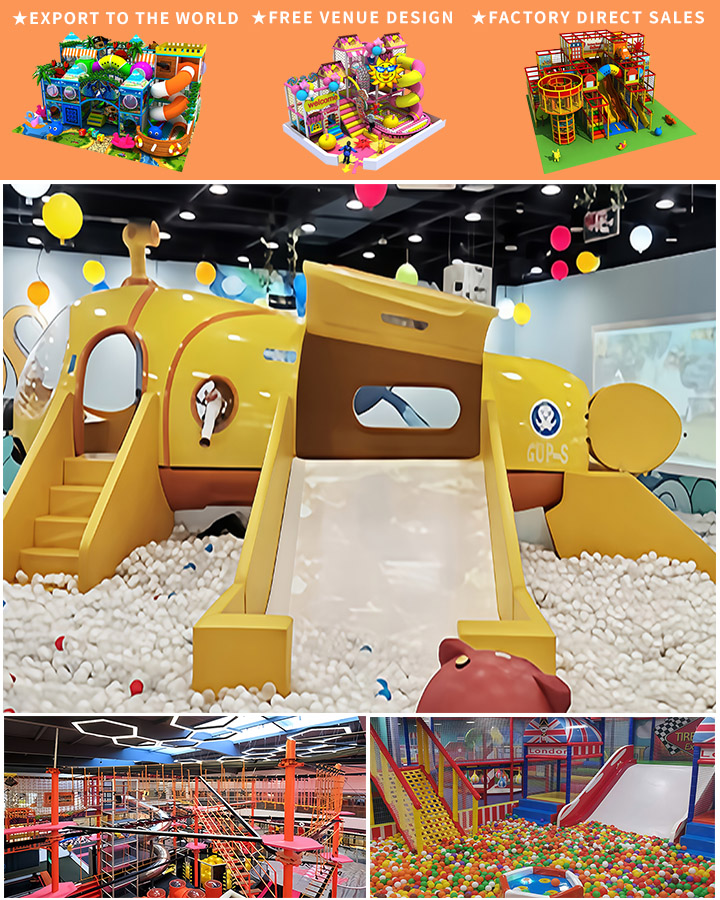In the vibrant world of early childhood education, the importance of indoor playground equipment in kindergartens cannot be overstated. These facilities not only provide a safe and engaging environment for young children to develop their physical skills but also play a pivotal role in fostering social interaction and creativity. This article delves into the various aspects of kindergarten indoor playground equipment and its crucial role in preschool development.
The Role of Indoor Playground Equipment in Early Childhood Education
Indoor playground equipment is meticulously designed to cater to the unique needs of preschoolers, who are typically aged between 2 to 5 years. During this formative period, children undergo rapid physical, cognitive, and emotional growth. The right kind of playground equipment can significantly enhance their overall development by providing opportunities for physical exercise, problem-solving, and social engagement.
Physical Development
One of the primary benefits of kindergarten indoor playground equipment is the enhancement of physical development. Activities such as climbing, sliding, and balancing not only improve motor skills but also build strength and coordination. Equipment like soft play structures, balance beams, and mini trampolines are specifically designed to ensure that children can engage in physical activities safely within an indoor setting.
Cognitive and Creative Growth
Indoor playgrounds are not just about physical activity; they also stimulate cognitive and creative growth. Interactive elements like puzzle panels, sensory walls, and imaginative play zones encourage children to think critically and creatively. These activities help in developing problem-solving skills and enhancing their ability to understand spatial relationships.

Social Skills and Emotional Development
Playgrounds serve as social hubs where children learn essential social skills such as sharing, cooperation, and conflict resolution. Group activities on the playground, whether it’s playing tag or building a fort together, teach children how to interact positively with their peers. Additionally, these interactions help in emotional development by teaching empathy, turn-taking, and respect for others.
Types of Kindergarten Indoor Playground Equipment
The variety of indoor playground equipment available for kindergartens is vast, catering to different aspects of child development. Here are some popular types:
Soft Play Areas
These areas are equipped with foam mats, soft blocks, and cushioned play structures. They provide a safe environment for toddlers and young children to explore and play without the risk of injury. Soft play areas are particularly beneficial for developing gross motor skills and encouraging imaginative play.
Climbing Structures
Climbing walls and structures made from soft materials offer a fun way for children to develop their climbing skills and boost their confidence. These structures often come in various themes, such as castles or jungle gyms, making them more engaging for young minds.
Slides and See-Saws
Slides and see-saws are classic playground components that never lose their charm. They provide endless entertainment while helping children improve their sense of balance and coordination. Modern indoor slides are designed with safety in mind, featuring gentle slopes and secure handrails.
Educational Toys and Games
Incorporating educational toys and games into the playground setup can make learning fun. Interactive panels with buttons, lights, and sounds can teach basic concepts like numbers, letters, and colors. These educational tools are integrated into the playground design to ensure continuous learning through play.
Safety Considerations
While the benefits of indoor playground equipment are numerous, safety remains a top priority. It is essential to ensure that all equipment meets stringent safety standards and is regularly inspected for wear and tear. Non-toxic materials should be used to avoid any health hazards, and supervision by trained adults is crucial to prevent accidents.
Conclusion
In conclusion, kindergarten indoor playground equipment plays a vital role in the holistic development of preschool children. By providing a safe and stimulating environment, these play areas promote physical fitness, cognitive growth, and social skills. As educators and parents, investing in high-quality indoor playground equipment is a step towards ensuring that children have a joyful and enriching early childhood experience. With the right tools and a focus on safety, indoor playgrounds can become a cornerstone of effective early childhood education.




